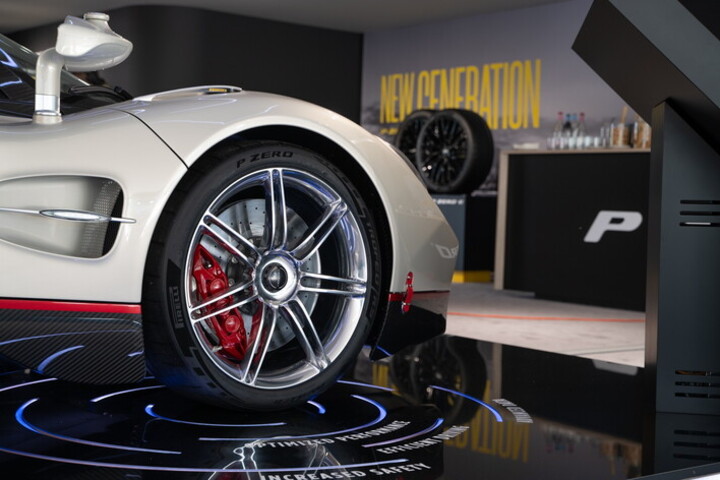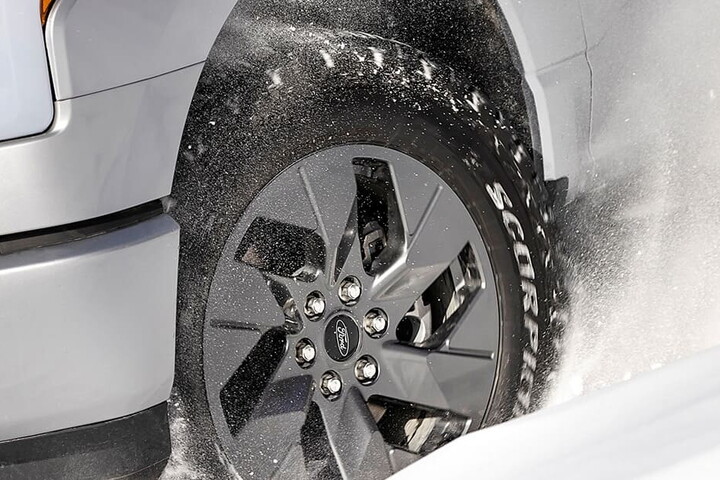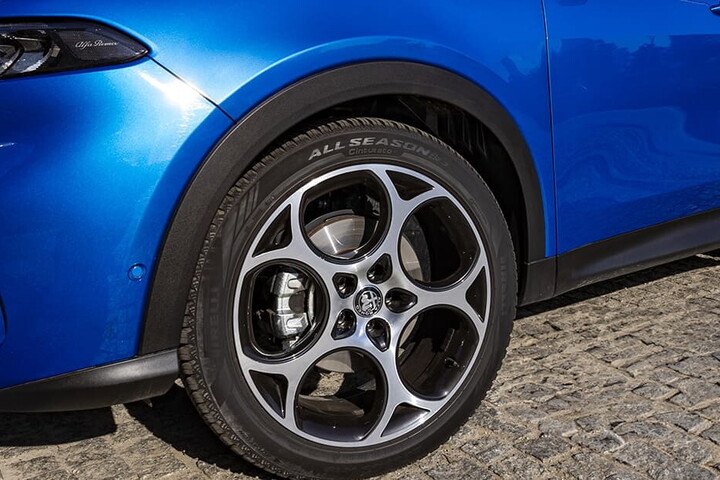When the temperature starts to gradually fall with the advance of autumn and the arrival of the winter, the roads become increasingly colder, wetter and more challenging. When the temperature drops to below 7°C, summer tyres (due to their tendency to stiffen), no longer have the same efficiency. In this case they should be replaced by special winter tyres.


YOU DON'T HAVE TO FEAR THE VAGARIES OF THE WEATHER
These tyres are the fruit of technological progress dating from the first "winter tyres" used in northern Europe a little more than forty years ago, and which subsequently grew with the more advanced "thermal" compounds to the current, highly refined winter products.
To give these types of winter tyres a higher performance their specific structure remains soft even at the lowest temperatures. This solution makes it possible for the tyres to be constantly efficient, both from the performance perspective and from the perspective of road-holding on icy and slippery surfaces.
The structure is in fact less granular, and is the softest among the types commercially available. This is a feature that makes it possible to quickly attain the optimum running temperature and at the same time to demonstrate remarkable elasticity and versatility throughout the journey. At temperatures of below 7°C, braking times reduce by an average of 10% in wet conditions and by 20% in the snow. In fact, by observing the tread of a winter tyre, you can actually notice the peculiar lamellae, in practice the blocks that make up the mosaic on which the tyre rests. Elements that are separated by deep grooves. This design has a very precise function: the lamellae capture the snow, giving the rubber the best grip on this particular terrain; while the recesses drain off the water, in the case of wet asphalt, preventing the risk of aquaplaning. A combination that allows winter tyres to be reliably effective and versatile, without having to use chains.
Their performance is therefore necessarily related to their structural conditions and also to their fuel consumption, which also determines the average. It is recommended that they are replaced when the depth of the tread is less than 4 mm (which is already a limit value). Their condition very much affects the effectiveness of winter tyres. If they are not in the proper condition, this type of tyre does provide safety either on snow or on wet roads. Their effectiveness is also reduced when temperatures begin to rise above 7° C, contrary to what happens with summer tyres, since with the increase in temperature the softer structure, is less effective than for a summer tyre.
 ONE WINTER TYRE FOR EVERYBODY
ONE WINTER TYRE FOR EVERYBODY
Winter tyres, available for a wide range of vehicles, from small city cars to more powerful sports cars and versatile SUVs, are available in different sizes and dimensions, and are distinguishable from the summer ones owing to a softer carcass compared with summer tyres and particularly in respect of the same rolling surface, with lower width and with a higher and thus less rigid shoulder.
The Italian Highway Code recognises the initials M + S or M & S and M-S, which indicates their capability for “mud and snow", in practice their possible use in "mud and snow". Furthermore, according to European Directive 92/23/EEC which deals with the use of this specific type of tyres, their use, for the same size, is permitted at a speed even lower than the one approved in the registration document. Nevertheless they respect the minimum usable code marked with the letter Q, equal to 160 km / h. This is indicated on the shoulder of the tyre along with the details of the sizes. Where the speed code of the winter tyres is lower that that for the winter ones, it is not possible to use them between 15 May to 15 October.
HOW TO RECOGNISE A WINTER TYRE AT A GLANCE
The mark M+S can be also be accompanied by another symbol, a stylised three-peak mountain with a snowflake. In English the “three-peak-mountain with snowflake” or simplified as 3PMSF. Such a mark is only achieved if the tyre has passed a specific test. A check which recognises the behaviour of the compound on challenging terrains, accompanied by a benchmark type from the M+S type range. If this demonstrates better braking at a percentage equal to or greater than 7% the test is passed. The best performance can even reach values of 30%.
Moreover, the winter tyre with the 3PMSF sign performs a lot better in more extreme conditions, thanks to the synergy of the various materials used in its development and the tread pattern. This advantage is 75% related to the various components and the remaining percentage to the shape of the lamellae.
The range of Pirelli winter types also includes the Winter Sottozero Serie II and Winter Sottozero 3, tyres that deliver to premium and prestige class vehicles high performance in different winter situations. Cinturato Winter has been designed to ensure safety to the C segmen.tFor SUVs, however, there is the Scorpion Ice & Snow range and Scorpion Winter, which provide an optimal balance of driving speed and of noise reduced to minimum levels in all driving conditions and on any surface. Finally the Winter Carrier tyre, generally aimed at Vans or Commercial vehicles. In addition to ensuring an excellent road handling and safety on the road during the cold season, this product also showed an improved life in terms of mileage (Pirelli suggest an improvement in the range of 30%).
The product offer for driving on snowy or icy roads is not restricted to these types. There is a range of so-called Nordic tyres, designed for users present in specific areas of northern Europe, as well as Russia and Canada. During colder periods, they need to make journeys along roads made difficult by snow and ice. In these environments you need tyres provided with studs, even if they have certain restrictions in residential areas. For this particular condition Pirelli recently unveiled the Ice Zero FR. A stud less tyre, but which behaves as if it were, thanks to the synergy of the components and the specific design developed by engineers to ensure effective control and optimum braking on all types of dry or wet road, even on rough or wet ice, compact mud or snow. Just the types of situations in which Scandinavian or Russian motorists may find themselves. The range is comprised of different sizes and types, including Run Flat, for a wider range of vehicles and SUVs.




